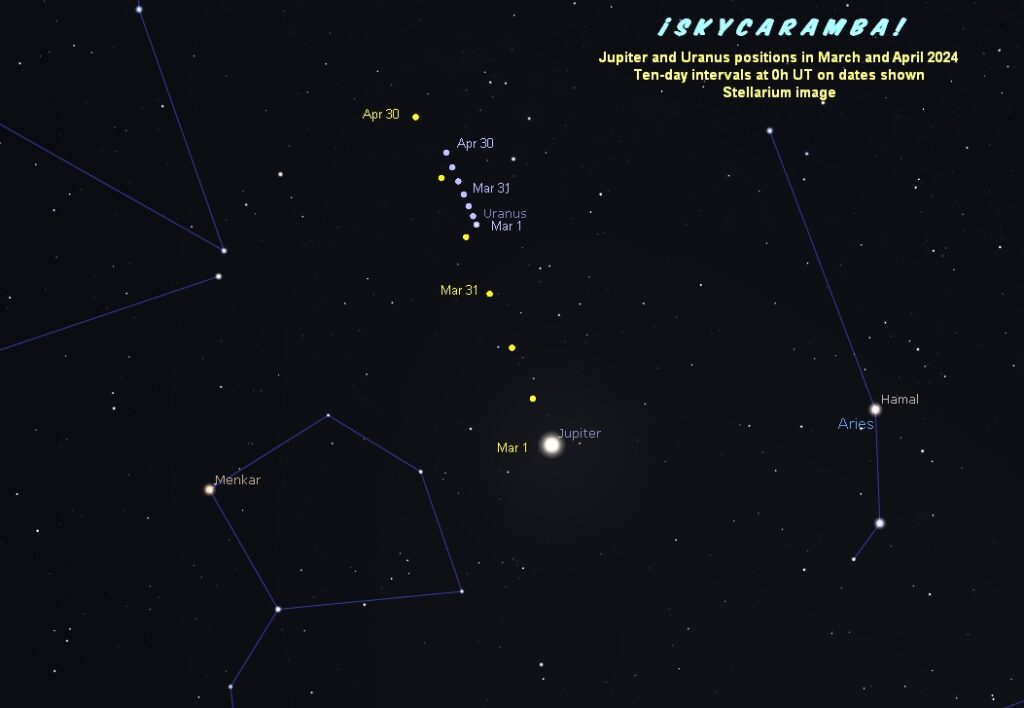
Jupiter is high up in the west in the evening as darkness begins this month. Uranus is nearby and you’ll probably need binoculars or a telescope to see it. Both are moving prograde or eastward. Jupiter is faster. A growing crescent moon visits on the 13th. Jupiter is catching up to Uranus and there will be a conjunction in late April. This is one of those slow motion astronomy shows you can enjoy by watching every few nights until the culmination.
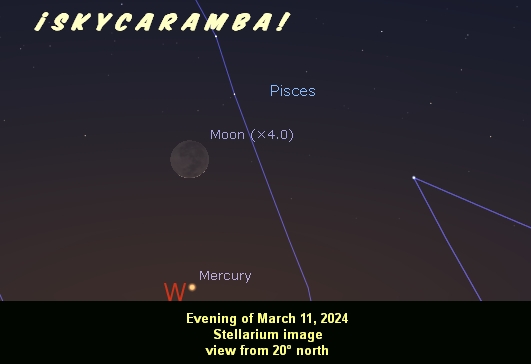
Mercury is barely an evening object. Around the 10th and 11th, a thin crescent lunar disk will be close to it. The messenger planet keeps rising earlier each evening until greatest elongation on the 24th when it’s nicely placed between the two fish of Pisces. The best view will be from around 25° north. Mercury will keep going eastward or prograde among the stars until right at the end of this month when it touches the eastern fish. But since the sun is moving eastward faster, you don’t see Mercury for as much time after that before sunset.
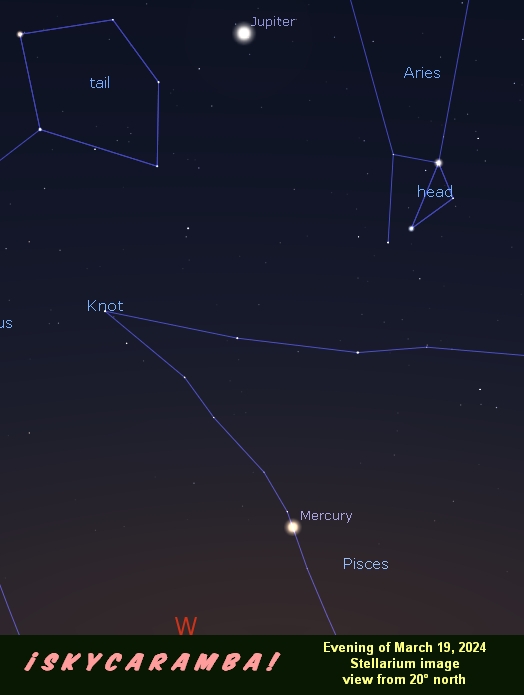
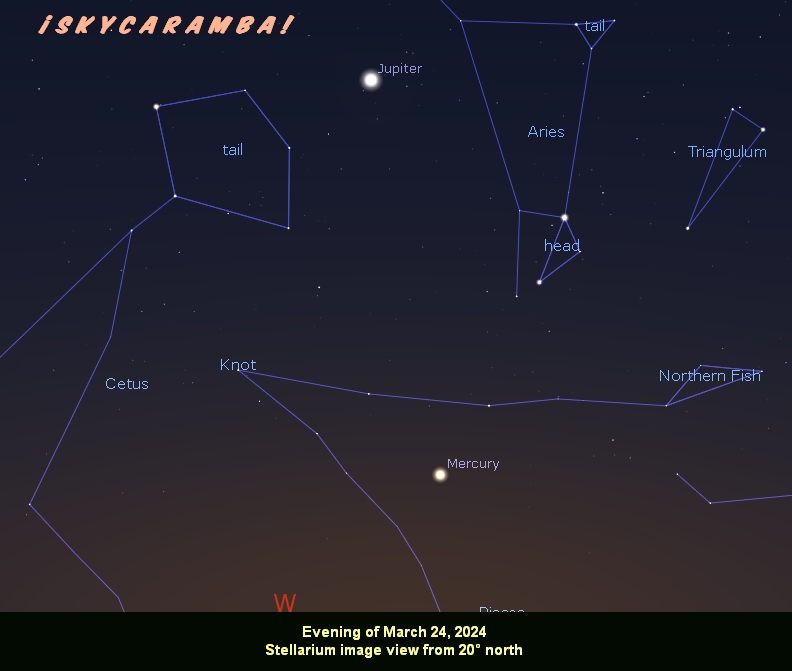

In the morning sky, Venus is pulling away from Mars after their close call on February 22nd. Both are heading sunward. Coming the other way is Saturn. A thinning crescent moon will be near Mars and Venus on the 8th. You might spot the moon near Saturn the next morning. Then there’s new moon the day after that. The best views will be from around 20° south. From lower northern latitudes, Saturn is too low as sunrise approaches to be seen. From the middle northern latitudes, even Venus is a challenge. Mars disappears from the view too around 40° north. Venus and Saturn will be closest on the 21st at 0.3° separation. On the 29th, the three morning planets will be equidistant. Stepping backward from the sun will be Venus, Saturn, and Mars with approximate 8.75° spacing.
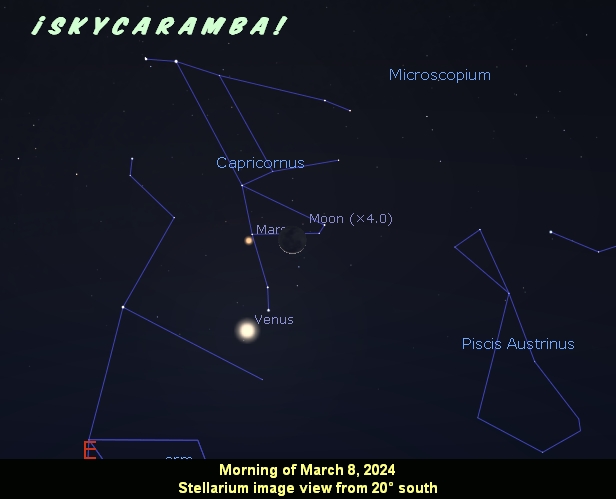
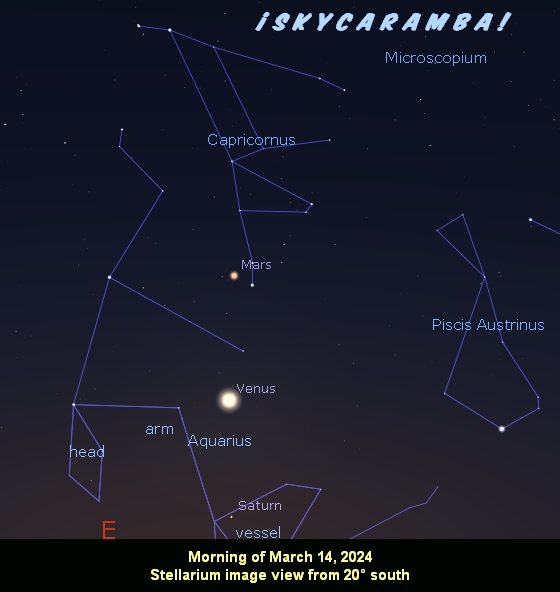
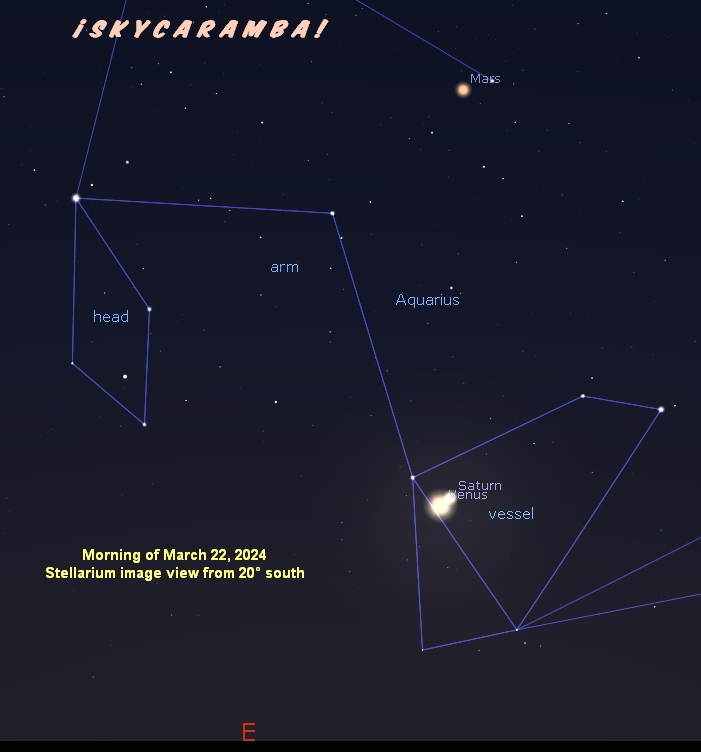
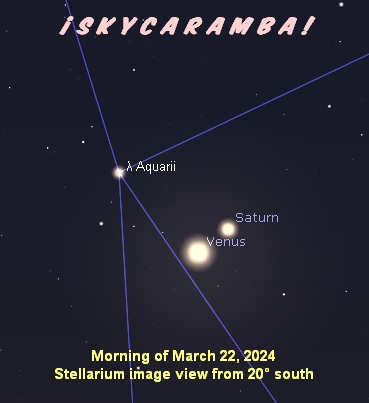

The moon’s phases this month are: last quarter on the 3rd, new on the 10th, first quarter on the 17th, and full on the 25th. Southern lunistice is on the 5th at 28.5°. The moon goes north on the 11th. Northern lunistice is on the 17th at 28.5°. And the southward crossing is on the 25th. Lunar perigee is on the 10th at 356,900 km. Apogee is on the 23rd at 406,300 km.
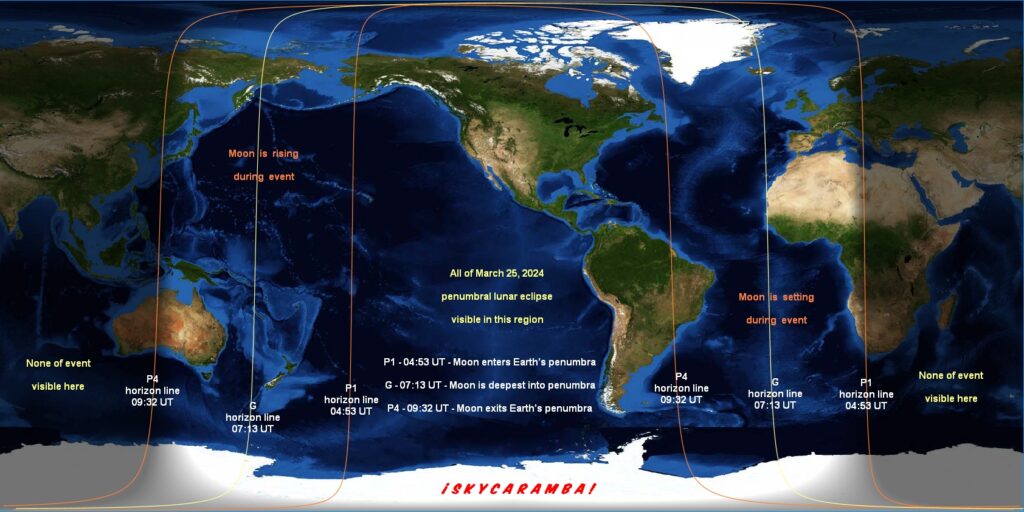
This month’s full moon comes with a penumbral eclipse. The moon will pass through the outer part of Earth’s shadow from 04:53 UT to 09:33 UT. Greatest eclipse is at 07:12 UT. Penumbral eclipses aren’t as distinct as partial and total eclipses. Maybe the moon will seem slightly darker. Maybe it will look more red or orange than usual. The brightness or tint may change as you look from one side of the lunar disk to the other. If you take just one look at the moon during the eclipse, you aren’t like to notice much. Take several looks and try to see the changes. This eclipse is visible in its entirety from almost all of the Americas. Greenland, western Iceland, eastern Brazil, and a small part of the west coast of northern Africa will get a moonset event. It’ll be a moonrise event for New Zealand, Samoa, Vanuatu, and other Pacific islands all the way north to the Aleutians, western Alaska, and the Anadyr Plateau area of Russia.
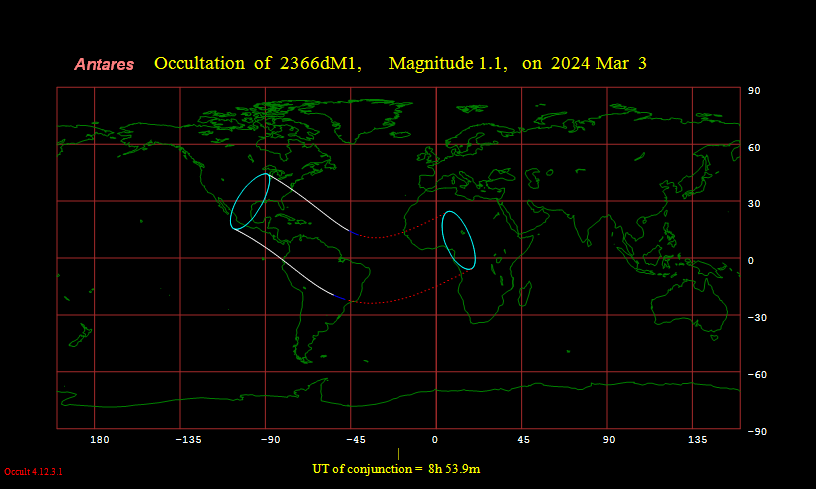
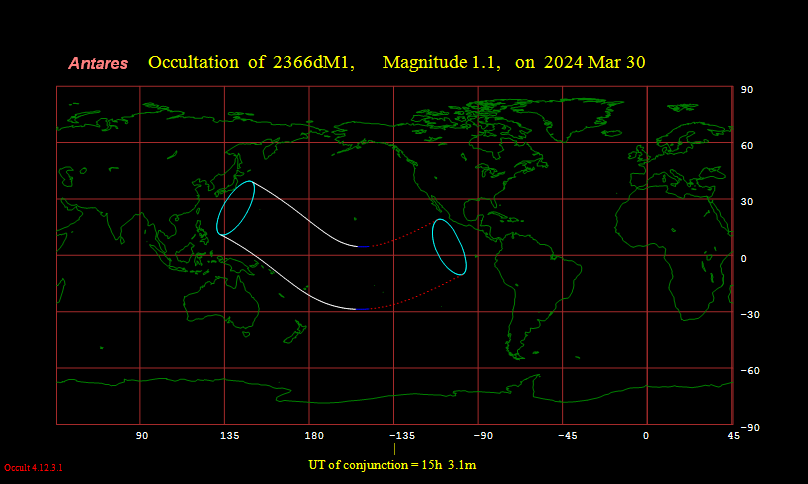
The moon passes by Antares on the 3rd, Elnath on the 16th, Pollux on the 19th, Regulus on the 22nd, Spica on the 26th, and Antares again on the 30th. Both close calls with Antares will come with occultations. The visibility zone for the one on the 3rd will be the Gulf states of the U.S., Central America, the Caribbean, and northern South America. For the event of the 30th, it will be in the western Pacific. The Marianas, Caroline, and Gilbert island groups will be in the visibility zone. The close call with Elnath brings an occultation to the southern Atlantic Ocean east of the Mid-Atlantic Ridge. The approximately 4,400 residents of St. Helena Island can plan for it.
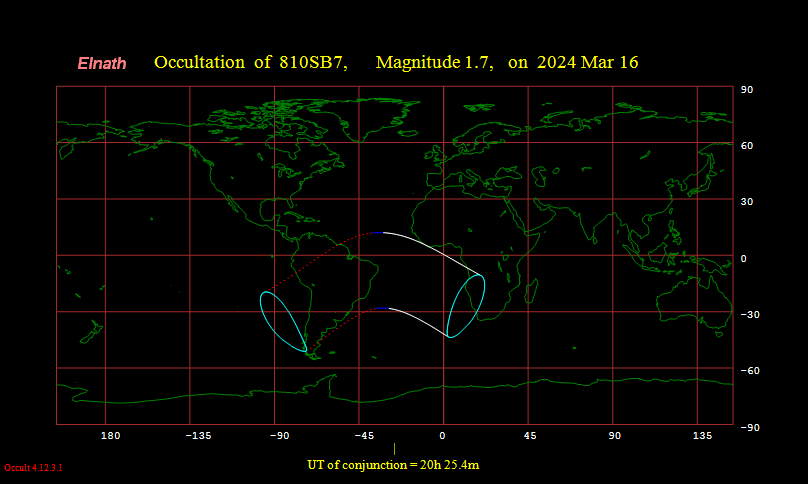
Mercury is at perihelion on the 17th at 0.307 astronomical units. Two days later, Venus is at aphelion at 0.728 a.u.
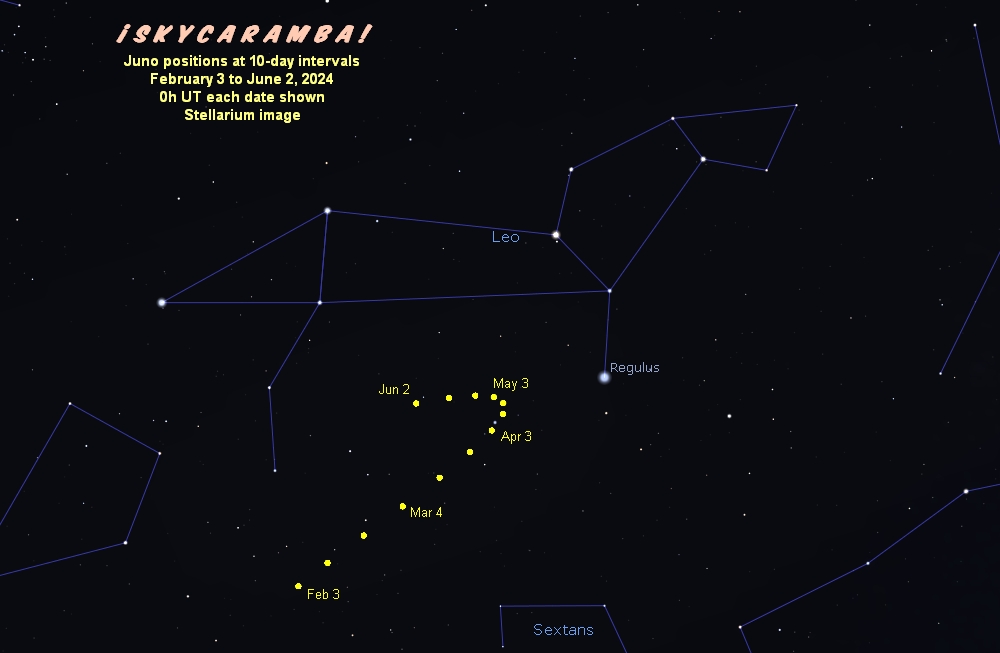
The asteroid Juno is at opposition on the 3rd. It’s 1.69 a.u. from Earth. Juno is at the belly of Leo. It was the third object discovered in the asteroid belt between Mars and Jupiter. You can see it with binoculars. German astronomer Karl Harding discovered it in 1804 with a telescope. It’s a highly refelective object that orbits the sun in about four years, four months. This isn’t one of Juno’s closest oppositions. Those happen every 13 years or so, the next one in 2031. But if you know where to look and have just a little magnification and a dark enough sky, you should have a good view.
The March equinox is on the 20th at 03:07 UT.
